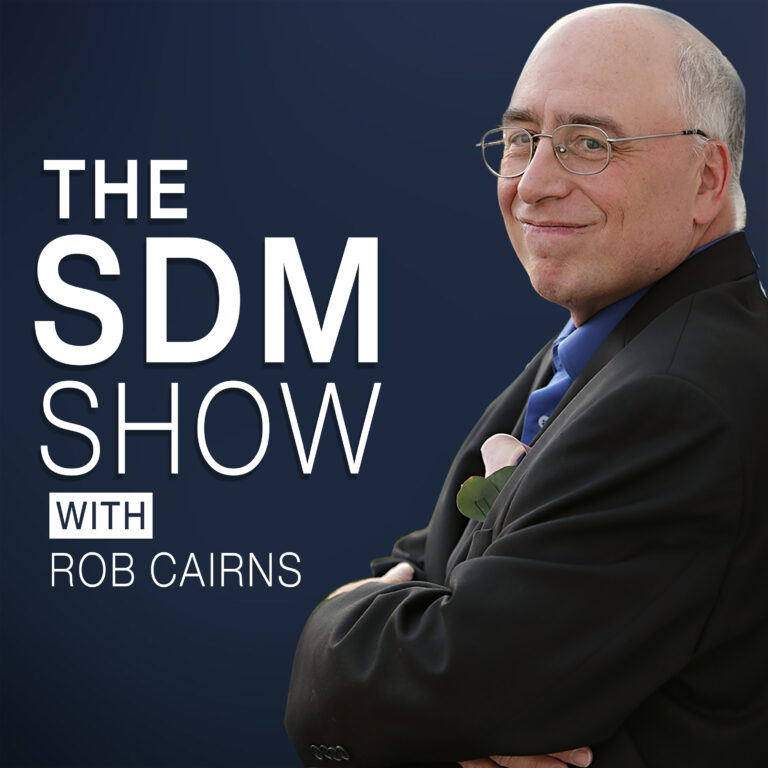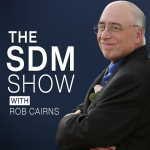Episode 535 SEO With Warren Laine-Naida Using Ai To Increase Your Search Visibility
Show Summary
This podcast episode of the SDM show features a discussion with Warren Laine-Naida about leveraging artificial intelligence to improve search engine visibility. The conversation emphasizes a shift in SEO strategy away from keyword stuffing towards a more semantic and entity-based approach, focusing on understanding the meaning behind search queries. Laine-Naida explains how large language models analyze text and context, highlighting the importance of creating natural, engaging, and informative content that caters to both users and AI algorithms. Practical advice includes defining business entities, utilizing search tools for research, structuring content with schema markup, building topical authority, and optimizing content for featured snippets and AI-powered search. The core message underscores that high-quality, user-focused content remains the most effective SEO strategy in this evolving landscape.
Show Notes
Introduction: Navigating the New Era of SEO with AI
Welcome! This is Warren, and today we’re diving deep into the exciting and rapidly evolving world of SEO, specifically focusing on the profound impact of Artificial Intelligence (AI) and Large Language Models (LLMs). The game is changing daily – from innovations like Notebook LM to the ever-improving capabilities of AI, it’s clear that SEO is anything but boring.
The core question we’ll tackle is: How can we better understand and leverage AI, particularly LLMs, to enhance our search visibility? What do these models look for, what should we be aware of, and how can we use this knowledge to our advantage, especially as the search landscape potentially shifts beyond traditional Google dominance?
Foundational Principles Remain Crucial (The 4 Es)
Despite the influx of new technology and AI tools, four fundamental principles remain paramount for success:
- Engage: Keep your audience interested and interacting.
- Entertain: Make your content enjoyable and memorable.
- Educate: Provide valuable information and insights.
- Empower: Equip your clients, customers, teams, and even yourself with the knowledge and tools they need.
The goal is still to get found by offering useful, firsthand, high-quality content (think E-E-A-T or similar quality signals). The era of simply chasing keywords is fading; we need to evolve.
Shifting Focus: From Keywords to Semantics and Entities
AI is reshaping SEO, pushing it further towards user experience, accessibility, and optimizing content not just for traditional search engines, but also for social media algorithms and AI-driven search.
Understanding Large Language Models (LLMs) in the Context of SEO
So, what are LLMs, and what do they mean for SEO?
- Definition: LLMs (Large Language Models) are AI systems trained on vast amounts of text data to understand human language, predict text sequences, and generate human-like, contextually relevant content.
- Functionality (Simplified): They work by predicting the most likely next word in a sentence based on the patterns learned from their training data. Think of them as incredibly advanced autocomplete systems.
- Examples: Tools like OpenAI’s models (powering ChatGPT), Google’s Gemini, Anthropic’s Claude, Perplexity AI, and Microsoft’s Co-pilot are all examples built on LLM technology.
- Capabilities: They can answer questions, generate text, summarize documents, assist with coding, and much more.
LLMs are driving search towards semantic results – understanding the meaning and intent behind queries, not just matching keywords. We can also use these same AI tools to help optimize our existing content. Essentially, AI is nudging SEO content away from keyword repetition and towards natural, meaningful language.
How to Leverage AI and LLMs for Better SEO: Actionable Strategies
The transition away from old-school keyword tactics requires a shift towards semantic and entity-based SEO. It’s no longer just about placing keywords; it’s about understanding meaning, recognizing entities (people, places, things, concepts), and mapping the relationships between them. Search engines and LLMs are increasingly matching entities and concepts, not just words.
Here’s how to adapt:
1. Define Your Core Business Entities
Identify the core concepts, services, or products your business revolves around.
- Example: If your business focus is “Adult Education,” related entities might include:
- Industries Served: Healthcare, Technology, Hospitality
- Course Topics: Leadership Training, Software Skills, Compliance Certifications (tailored to those industries)
- Target Audience Needs: Career advancement, Skill development, Industry certification
Understanding these connections is the crucial first step.
2. Utilize Traditional Search Engines for Research (Still Valuable!)
Google and Bing remain powerful research tools. Use them to gather data on user behavior and search intent:
- Analyze “People Also Ask” (PAA) sections.
- Explore topic filters in search results.
- Review Google Search Console and Bing Webmaster Tools data to see the actual terms people use to find your site.
3. Structure Content Around Entities
Make it easy for both users and machines (search engines, AI) to understand what your content is about and how different concepts relate.
- Schema Markup (Structured Data): Use schema.org vocabulary to explicitly define entities and their relationships on your website.
- Example: Use LocalBusiness schema (or more specific types like EducationalOrganization) if you offer adult training courses at a physical location or online.
- Tools: Plugins like Yoast SEO, Rank Math, or All in One SEO can help implement schema. (Rank Math often offers more schema types in its free version).
- Build Topical Authority: Cover related topics comprehensively to establish your website as an authority on a core entity.
- Example: If your entity is “Adult Education in WordPress Development,” write in-depth content about related sub-topics like coding best practices, WooCommerce, website performance, PHP, HTML, and SEO for WordPress sites.
- Strategic Internal Linking: Link related pages together logically. This reinforces the connections between entities for search engines and helps users navigate your site.
- Example: Link your main “Adult Education” page to specific course pages like “WordPress Development Course,” “SEO Fundamentals Course,” etc.
- Content Clusters: Group related content pieces around a central “pillar” page. This demonstrates expertise and makes connections clear.
- Use Entity-Rich Language: Write naturally, incorporating relevant terms and concepts associated with your entities. Don’t just state the obvious; provide context and detail.
- Avoid: “WordPress is popular.”
- Prefer: “WordPress, an open-source content management system known for its flexibility and ease of use, powers over 40% of all websites on the internet.” (Provide substance for the ‘bots’ and users).
4. Optimize for Featured Snippets, AI Search, and Direct Answers (Content Chunking)
Break down your content into digestible, easily understandable pieces optimized for different search features.
- Q&A Format: Answer common questions directly.
- Lists and Bullet Points: Make information scannable.
- Concise Definitions/Answers: Aim for clear, factual answers (around 50 words is often cited as a good length for potential featured snippets).
- Structured for Digestibility: Ensure content is easy to read for humans, AI crawlers, and search algorithms. (Search “content chunking” for more info).
5. Understand and Leverage Embeddings
LLMs use “embeddings” – numerical representations of words or phrases – to understand context, meaning, and semantic similarity. Ambiguous terms can be better understood through their surrounding context, captured by these embeddings.
- How it Works (Simplified Analogy – Think ‘Severance’): Imagine each word or concept having coordinates on a map. Similar concepts (like ‘café’ and ‘latte’) are placed close together, while distinct concepts (‘dog’ and ‘cat’) are further apart. When someone searches for “caffeinated beverages,” the system can return results about “coffee shops” because their embeddings are close in this ‘meaning map,’ even if the exact words aren’t used.
- How to Optimize for Embeddings:
- Use entity-rich, natural language.
- Build semantic relationships through internal/external linking.
- Implement schema markup.
- Focus on semantic search intent, not just keyword matching.
- Implications for Content Creation:
- Write for People, Not Algorithms: Natural language wins.
- Content Depth Trumps Keyword Repetition: Provide comprehensive value.
- Related Topics Matter: Cover the subject area thoroughly.
Create memorable, relatable, and connected content across your website – effectively embedding meaning.
The Importance of Content Formatting and Quality
Content chunking is key. Breaking down large pieces of content improves readability, comprehension, and user engagement – precisely what search engines and AI models favor.
- Write for your human audience first.
- Optimize specific chunks for Google snippets.
- Structure information clearly for potential AI citations (like in Google’s SGE or Perplexity).
Ultimately, Great Content Reigns Supreme
If all this sounds complex, remember the core truth: The best SEO is still creating genuinely great, valuable, and trustworthy content. Focus on quality, address user needs, and provide real insights.
Key Takeaways and Future Outlook
- SEO is moving decisively away from simple keywords towards semantics, entities, and relationships.
- Understanding and leveraging AI tools and LLMs is becoming essential.
- Focus on structuring content logically using schema, internal links, and content clusters.
- Build topical authority by covering subjects comprehensively.
- Optimize for direct answers, snippets, and AI search through content chunking and clear formatting.
- Natural language and content depth are more important than ever.
- The basics still matter: Build content that builds trust.
This is an incredibly exciting time in SEO. While the tools and techniques are evolving, the fundamental goal of connecting users with valuable information remains.



